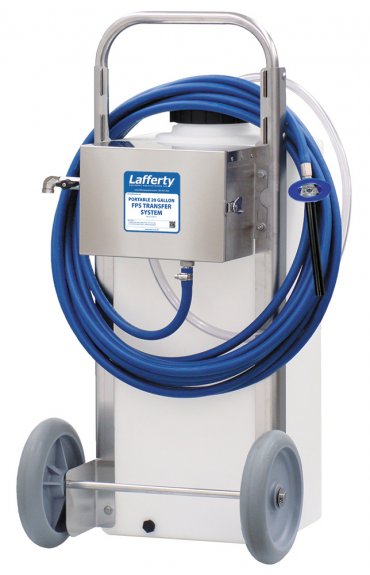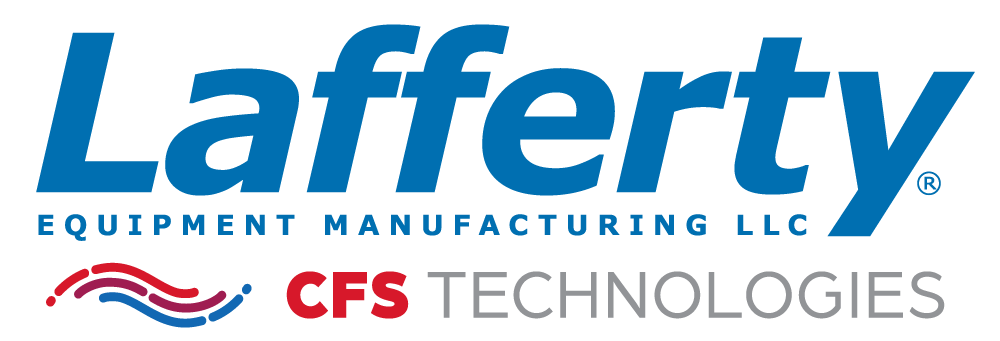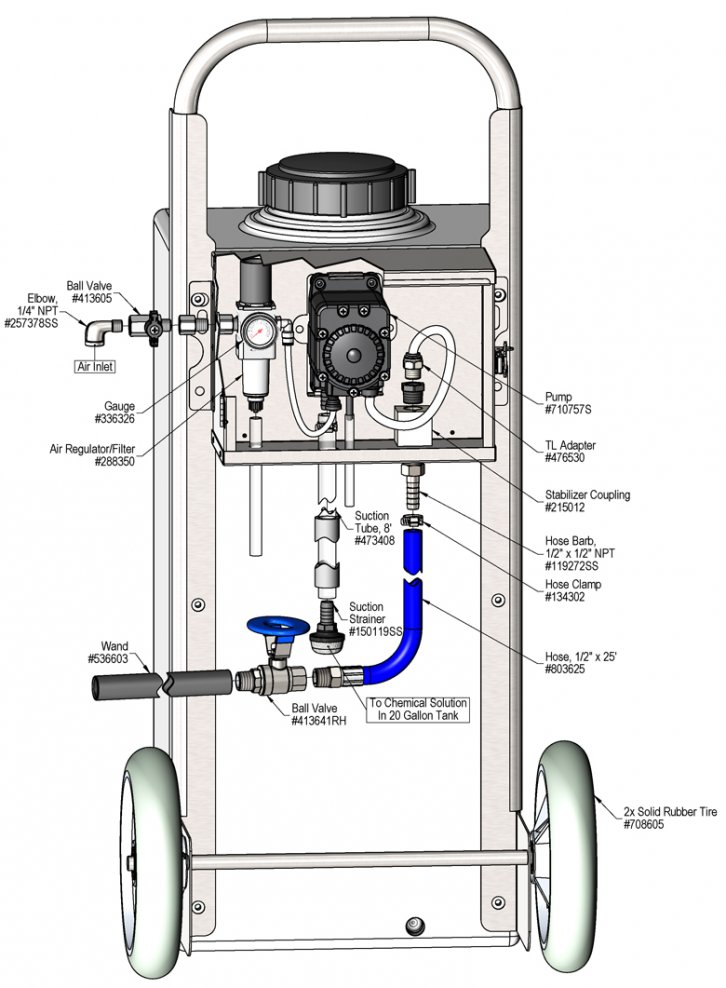| Chemical Concentrate or Ready-to-Use Solution | |
| Compressed Air | up to 4 CFM |
Lafferty Equipment Manufacturing, LLC
Installation & Operation Instructions
Model # 941912 · Portable 2-Wheel 20 Gallon FPS Transfer System
Requirements
Overview
The Portable 2-Wheel 20 Gallon FPS Transfer System is a chemical transfer system that will transport ready-to-use chemical or concentrate on an all stainless steel cart assembly and dispense it into any sized container using an open-flow wand. This unit uses compressed air to power a Flojet air-operated, double-diaphragm, pump which draws chemical from the 20 gallon tank and projects it through the 25 foot discharge hose, ball valve, and extended wand.


